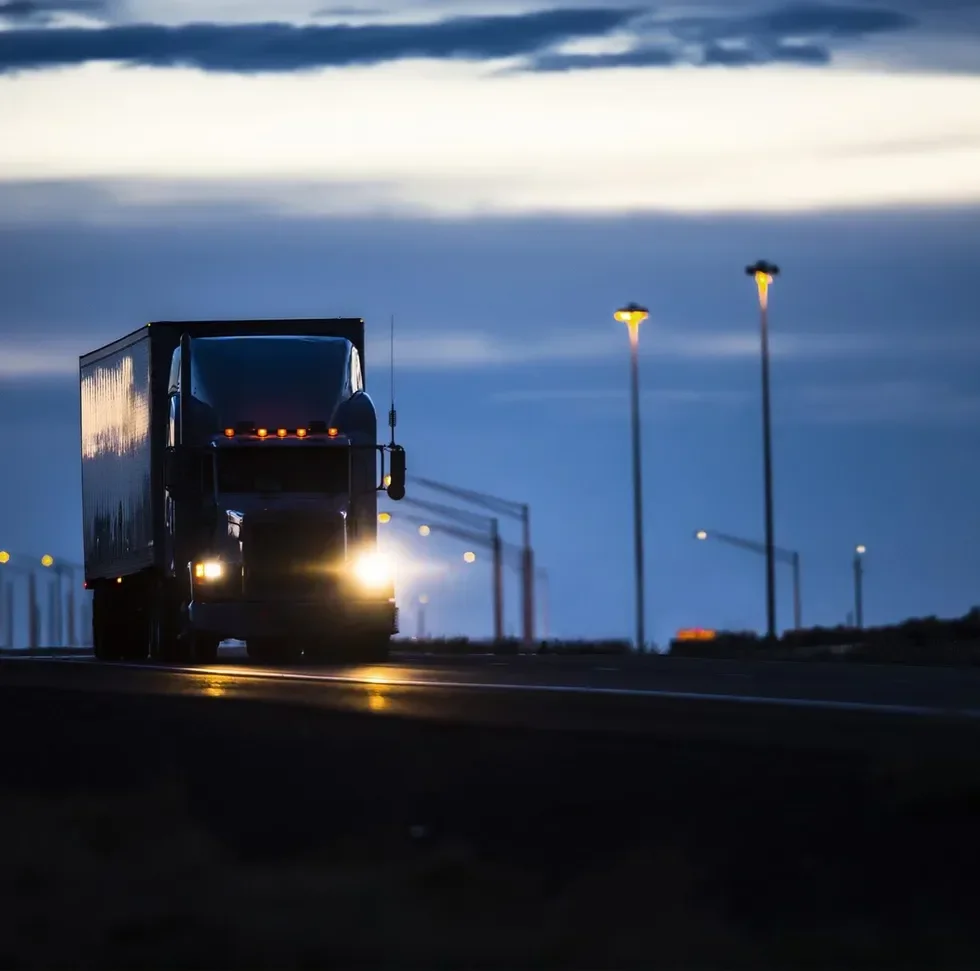
Top 5 Dangers of Driving in the Dark
What do you get when you add up the early sunsets of autumn with the end of Daylight Saving time? A lot more hours of driving in the dark.
Nighttime driving creates many additional hazards for professional truck drivers. While only 25% of all driving in the U.S. happens at night, half of all fatal crashes occur after dark, says the National Safety Council (NSC).
Knowing the answers to these five questions about the dangers of driving in the dark can help you navigate nighttime roadways safely:
How Can I Increase Visibility When Driving in the Dark?
Dark skies are just one visibility issue truck drivers must face each fall and winter. The darkness can affect your depth perception, color recognition and peripheral vision, too. Plus, the glare from oncoming headlights can temporarily blind you. Dimly or poorly lit roadways don’t make things easier. Some tips to increase your visibility:
- Use your high beams, but remember to dim them for oncoming traffic
- Adjust your headlights properly
- Keep your windshield and mirrors clean
- Dim your dashboard lights
What Should I Do if I Feel Drowsy While Driving?
Drowsy driving is just as dangerous as drunk driving. Drivers are three times more likely to be in a crash if they are fatigued, says the NSC.
- Know the warning signs: yawning, gentle swaying of the head, slow eyelid closures, seat fidgeting, delayed reactions, trouble staying in your lane or keeping your speed
- Pull over if you feel any of these warning signs and get some rest
- Get seven hours of sleep a night
How Do Other Drivers Impact Driving in the Dark?
Even though it may get darker earlier, the roads you travel on won’t be any less crowded. Evening rush hour (between 4 – 7 p.m. on weekdays) is especially dangerous. In addition, most crashes or near misses happen between 4 – 6 a.m., midnight – 2 p.m. and 2 – 4 p.m., says the NSC.
- Be patient
- Eliminate distractions (no cell phones or eating)
- Watch for impaired or distracted drivers
Should I Driver Slower at Night?
Driving in the dark means you have less time to react if something — or someone — crosses your path. Take it slower than normal when the sun goes down:
- Never drive over the speed limit
- Don’t tailgate
- Always wear your seatbelt
How Do I Avoid Hitting Deer or Other Animals at Night?
In October, November and December, drivers have a 1 in 109 chance of striking an animal on the road, says State Farm. Watch for animals around dawn and between 6 – 9 p.m., when they’re most active. If you see a deer or other animal:
- Don’t swerve – Swerving raises your risk of striking a guardrail, utility pole or other objects
- Should you strike an animal, pull over to a safe space. Turn on your flashers. Put down flares or reflective triangles. Call 911 or the local game commission as needed.